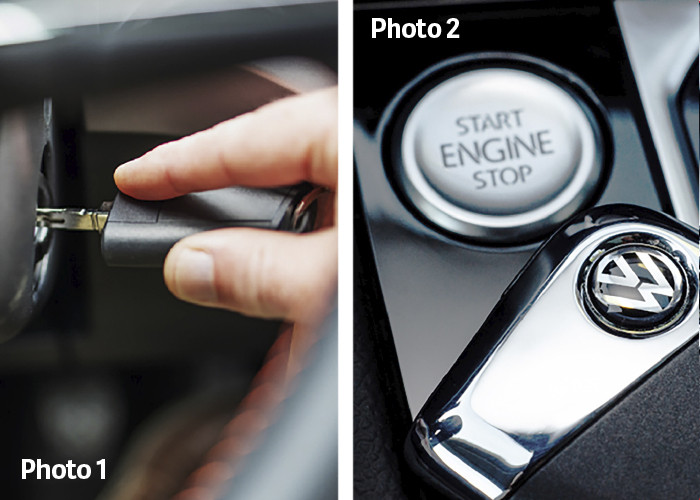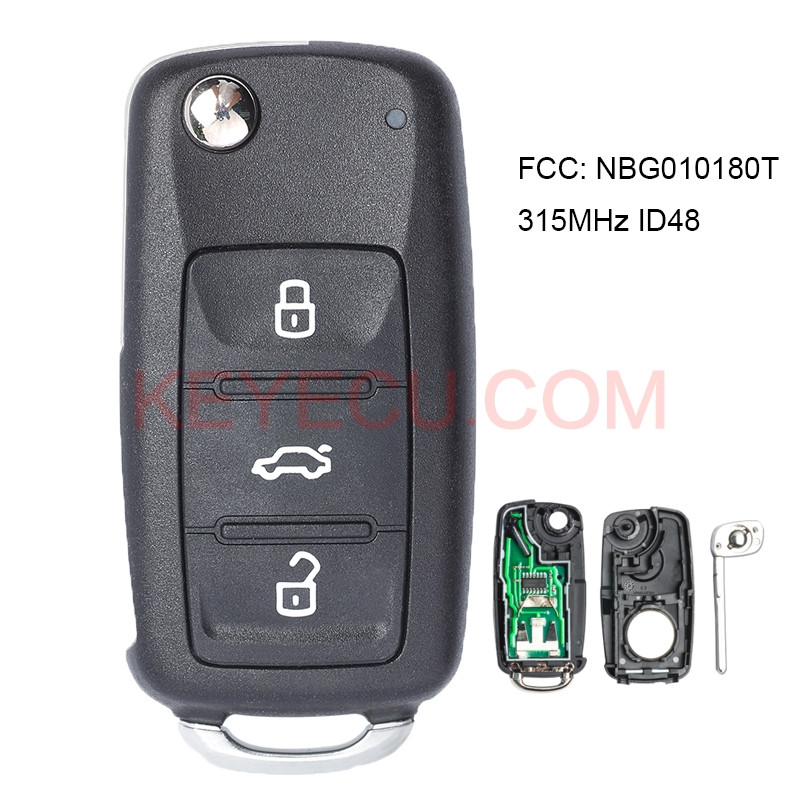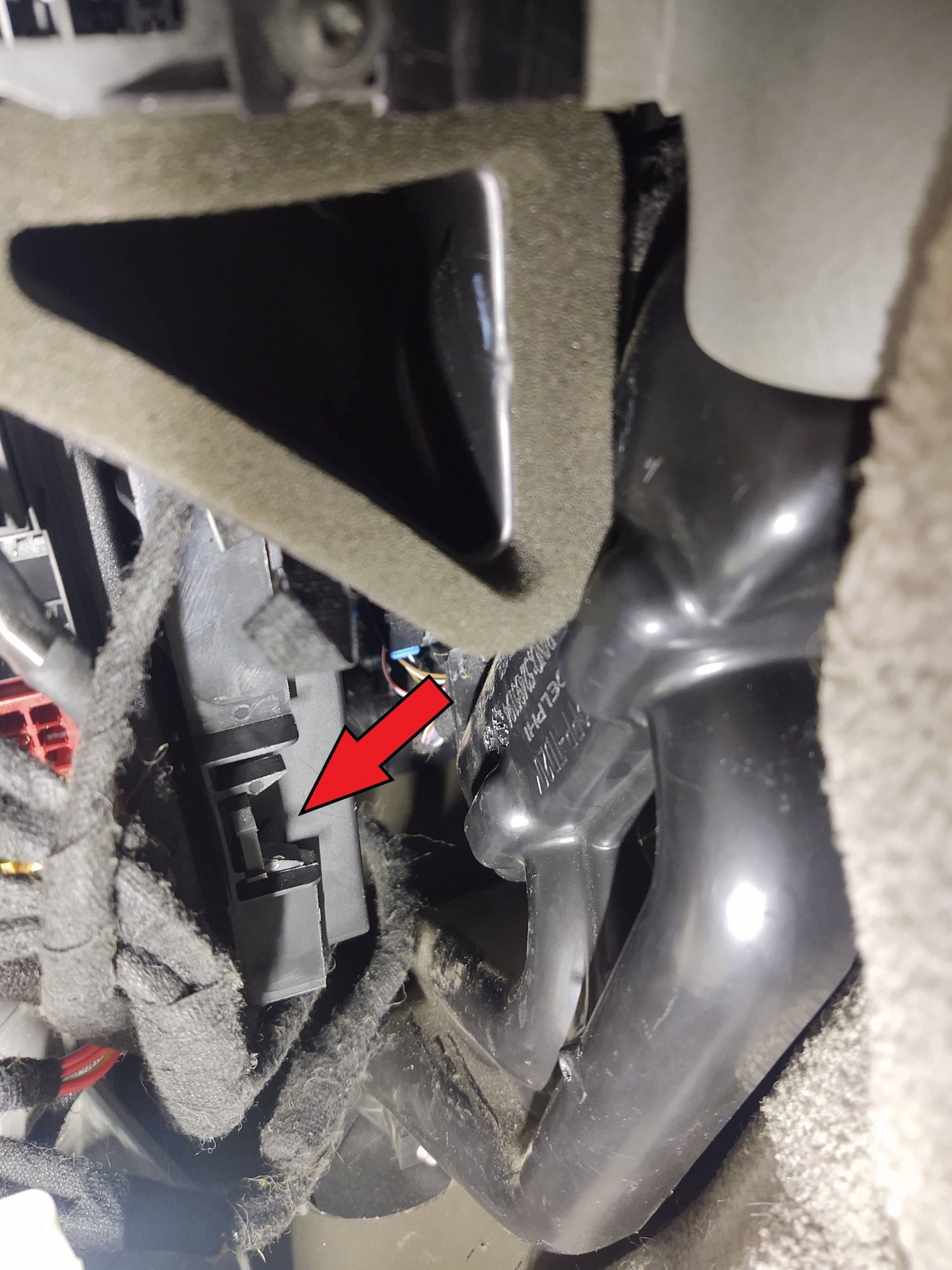1. Understanding VCDS Audi Key Programming
VCDS (VAG-COM Diagnostic System) is a software and hardware tool used for diagnosing and programming Volkswagen Audi Group (VAG) vehicles, including Audi. Key programming involves matching new or replacement keys to the vehicle’s immobilizer system, allowin...
1. Understanding VCDS Audi Key Programming
VCDS (VAG-COM Diagnostic System) is a software and hardware tool used for diagnosing and programming Volkswagen Audi Group (VAG) vehicles, including Audi. Key programming involves matching new or replacement keys to the vehicle’s immobilizer system, allowing the car to start and operate. This process is crucial when keys are lost, stolen, or when adding extra keys.
1.1. What is VCDS?
VCDS, developed by Ross-Tech, is a comprehensive diagnostic tool compatible with VW, Audi, Seat, and Škoda vehicles. It allows users to perform various functions, including reading diagnostic trouble codes (DTCs), viewing live data, performing output tests, and coding control modules. VCDS is highly regarded in the automotive industry for its extensive capabilities and user-friendly interface.
1.2. Why is Key Programming Necessary?
Key programming is necessary for several reasons:
- Lost or Stolen Keys: When a key is lost or stolen, programming a new key ensures that the old key cannot be used to start or access the vehicle, enhancing security.
- Replacement Keys: If a key is damaged or no longer functions, a new key must be programmed to work with the vehicle’s immobilizer system.
- Additional Keys: Many owners want an extra key for convenience or emergencies. Programming an additional key ensures it is recognized by the vehicle.
1.3. Security Implications
Key programming has significant security implications. Modern vehicles use sophisticated immobilizer systems to prevent theft. These systems require that the key’s transponder chip is recognized by the vehicle’s electronic control unit (ECU) before the engine can start. Programming ensures that only authorized keys can operate the vehicle.
1.4. Legal and Ethical Considerations
It’s important to consider the legal and ethical aspects of key programming. Programming keys for stolen vehicles or without proper authorization is illegal. Always verify ownership and have proper documentation before performing key programming.
2. Prerequisites for VCDS Audi Key Programming
Before starting the key programming process, several prerequisites must be met to ensure a smooth and successful outcome.
- VCDS Interface: A genuine Ross-Tech VCDS interface is essential. Aftermarket interfaces may not provide the necessary functionality or may damage the vehicle’s electronic systems.
- VCDS Software: The latest version of the VCDS software should be installed on a Windows-based laptop.
- New or Replacement Key: The new key must be compatible with the vehicle’s immobilizer system. Check the key’s part number to ensure compatibility.
- Vehicle Access: Access to the vehicle and its diagnostic port (OBD-II port) is required.
- PIN Code/SKC: The vehicle’s PIN code or Security Key Code (SKC) is needed to access the immobilizer system. This code is typically obtained from the dealer or through specialized key programming tools.
2.2. Obtaining the PIN Code/SKC
The PIN code or SKC is a critical piece of information required for key programming. Here are several methods to obtain it:
- Dealer: The vehicle’s dealer can provide the PIN code/SKC with proof of ownership.
- Online Services: Some online services specialize in retrieving PIN codes/SKC based on the vehicle’s VIN.
- Key Programming Tools: Advanced key programming tools can extract the PIN code/SKC from the vehicle’s ECU.
2.3. Ensuring Key Compatibility
Ensuring key compatibility is essential to prevent programming issues. Verify the key’s part number matches the vehicle’s specifications. Consult the vehicle’s manual or a dealer to confirm compatibility.
2.4. Battery Voltage Requirements
Maintaining stable battery voltage is crucial during key programming. Low voltage can interrupt the programming process and potentially damage the vehicle’s electronic systems. Use a battery charger or maintainer to ensure the voltage remains above 12.5V throughout the procedure.
3. Step-by-Step Guide to VCDS Audi Key Programming
This section provides a detailed, step-by-step guide on how to program Audi keys using VCDS. Always refer to the vehicle’s repair manual for specific instructions and safety precautions.
3.1. Connecting VCDS to the Vehicle
- Connect the VCDS interface: Plug the VCDS interface into the vehicle’s OBD-II port. The port is usually located under the dashboard on the driver’s side.
- Turn on the ignition: Turn the ignition to the “ON” position without starting the engine.
- Launch VCDS software: Open the VCDS software on your laptop and ensure the interface is recognized.
3.2. Accessing the Immobilizer Module
- Select Control Module: In VCDS, click “Select Control Module.”
- Enter Address 25 – Immobilizer: Enter “25” in the address field and click “Go.”
3.3. Logging into the Immobilizer
- Security Access – 16: Click on “Security Access – 16.”
- Enter PIN Code/SKC: Enter the vehicle’s PIN code/SKC. Use the format “0” + PIN code if it is a 4-digit code (e.g., “01234”). Click “Do It!”
3.4. Adaptation Channel 01: Adding New Keys
- Adaptation – 10: Click on “Adaptation – 10.”
- Enter Channel 01: Enter “01” in the channel number field.
- Read: Click “Read” to display the number of currently stored keys in the “Stored Value” field.
- New Value: Enter the total number of keys you want to program, including existing keys, up to a maximum of 8.
- Test: Click “Test” to verify the new value.
- Save: Click “Save” to save the new value.
- Programming the Keys: Within 15 seconds, take each key and press the unlock button for one second. The vehicle may provide an acknowledgment signal such as flashing lights or a beep.
- Complete: After programming all keys, the adaptation is complete.
3.5. Verifying Key Programming
- Test the Keys: Remove the VCDS interface and test each key to ensure it starts the vehicle and operates the remote functions.
- Check for Error Codes: Use VCDS to check for any new error codes in the immobilizer module.
3.6. Troubleshooting Common Issues
- Incorrect PIN Code: Double-check the PIN code/SKC and ensure it is entered correctly.
- Key Not Recognized: Verify the key is compatible with the vehicle’s immobilizer system.
- Communication Errors: Ensure the VCDS interface is properly connected and the software is correctly installed.
- Voltage Issues: Maintain stable battery voltage throughout the programming process.
4. Advanced VCDS Key Programming Techniques
Beyond basic key programming, VCDS offers advanced techniques for specific situations and vehicle models.
4.1. Key Adaptation for Different Audi Models
Key adaptation procedures can vary slightly between different Audi models. Always consult the Ross-Tech Wiki or the vehicle’s repair manual for model-specific instructions.
4.2. Using VCDS for Remote Matching
VCDS can also be used to match remote key fobs to the vehicle. This process typically involves accessing the central convenience module and using adaptation channels to program the remote functions.
4.2.1. Procedure for Remote Matching
- Access Central Convenience Module: In VCDS, select control module 46 – Cent. Conv.
- Adaptation – 10: Click on “Adaptation – 10.”
- Enter Channel 01: Enter “01” in the channel number field.
- Read: Click “Read” to display the number of currently stored remotes.
- New Value: Enter the total number of remotes you want to program.
- Test: Click “Test” to verify the new value.
- Save: Click “Save” to save the new value.
- Programming the Remotes: Press and hold the unlock button on each remote for at least one second within 15 seconds.
- Complete: After programming all remotes, the adaptation is complete.
4.3. Handling Immobilizer Issues
Immobilizer issues can arise from various factors, including ECU malfunctions, wiring problems, or key transponder failures. VCDS can help diagnose these issues by reading diagnostic trouble codes (DTCs) and providing live data from the immobilizer system.
4.3.1. Diagnosing Immobilizer Problems with VCDS
- Read Diagnostic Trouble Codes (DTCs): Use VCDS to read DTCs from the immobilizer module (Address 25).
- Interpret DTCs: Refer to the Ross-Tech Wiki or the vehicle’s repair manual to interpret the DTCs and identify the root cause of the problem.
- Perform Output Tests: Use VCDS to perform output tests on the immobilizer system to check the functionality of various components.
- Check Live Data: Use VCDS to view live data from the immobilizer system, such as key recognition status, transponder data, and ECU communication.
4.4. Resetting Immobilizer After Component Replacement
When replacing immobilizer components such as the ECU or instrument cluster, it may be necessary to reset the immobilizer system and adapt the new components. VCDS can assist with this process, but it typically requires the vehicle’s PIN code/SKC and specialized procedures.
4.4.1. Steps to Reset Immobilizer
- Access Immobilizer Module: Use VCDS to access the immobilizer module (Address 25).
- Security Access – 16: Click on “Security Access – 16” and enter the PIN code/SKC.
- Adaptation – 10: Click on “Adaptation – 10” and follow the instructions in the vehicle’s repair manual to adapt the new components.
5. Common Mistakes to Avoid During VCDS Audi Key Programming
Avoiding common mistakes is crucial for a successful key programming experience.
5.1. Using Incorrect PIN Code/SKC
Using the wrong PIN code/SKC is a common mistake that can prevent key programming. Double-check the code and ensure it is entered correctly. If unsure, obtain the code from the dealer or a trusted source.
5.2. Ignoring Battery Voltage
Ignoring battery voltage requirements can lead to interruptions and potential damage to the vehicle’s electronic systems. Always maintain stable battery voltage throughout the programming process.
5.3. Failing to Verify Key Compatibility
Failing to verify key compatibility can result in programming failures. Ensure the key’s part number matches the vehicle’s specifications.
5.4. Interrupting the Programming Process
Interrupting the programming process can cause incomplete programming or damage to the immobilizer system. Avoid any distractions and ensure a stable connection throughout the procedure.
5.5. Neglecting Software Updates
Neglecting software updates can lead to compatibility issues and programming errors. Keep the VCDS software updated to the latest version.
6. Benefits of Using CARDIAGTECH.NET for Your Automotive Needs
CARDIAGTECH.NET offers a range of solutions to simplify automotive diagnostics and key programming.
CARDIAGTECH.NET provides high-quality diagnostic tools that are essential for modern automotive repair. These tools include VCDS interfaces, key programming devices, and other specialized equipment.
6.2. Expert Technical Support
CARDIAGTECH.NET offers expert technical support to assist with any questions or issues that may arise during key programming or diagnostics. Our team of experienced technicians is available to provide guidance and troubleshooting assistance.
6.3. Comprehensive Training Resources
CARDIAGTECH.NET offers comprehensive training resources, including tutorials, videos, and guides, to help users master VCDS key programming and other diagnostic techniques.
6.4. Cost-Effective Solutions
CARDIAGTECH.NET provides cost-effective solutions for automotive repair and diagnostics. Our products are competitively priced and offer excellent value for money.
6.5. Wide Range of Products
CARDIAGTECH.NET offers a wide range of products to meet the diverse needs of automotive technicians and enthusiasts. From diagnostic tools to key programming devices, we have everything you need to keep your vehicle running smoothly.
7. Real-World Applications of VCDS Audi Key Programming
Understanding the real-world applications of VCDS Audi key programming can illustrate its value and importance.
7.1. Case Study 1: Replacing a Lost Key
An Audi owner lost their key and needed a replacement. Using VCDS, a technician was able to program a new key, ensuring the vehicle’s security and restoring functionality.
7.1.1. Steps Taken
- Obtained PIN Code/SKC: The technician obtained the PIN code from the dealer.
- Connected VCDS: Connected the VCDS interface to the vehicle.
- Accessed Immobilizer: Accessed the immobilizer module using VCDS.
- Programmed New Key: Followed the key programming procedure to add the new key.
- Verified Functionality: Verified that the new key started the vehicle and operated the remote functions.
7.2. Case Study 2: Adding a Spare Key
An Audi owner wanted to add a spare key for convenience. Using VCDS, a technician programmed an additional key, providing peace of mind and backup access to the vehicle.
7.2.1. Steps Taken
- Obtained PIN Code/SKC: The technician obtained the PIN code using an online service.
- Connected VCDS: Connected the VCDS interface to the vehicle.
- Accessed Immobilizer: Accessed the immobilizer module using VCDS.
- Programmed Additional Key: Followed the key programming procedure to add the spare key.
- Verified Functionality: Verified that the new key started the vehicle and operated the remote functions.
7.3. Case Study 3: Resolving Immobilizer Issues
An Audi owner experienced immobilizer issues that prevented the car from starting. Using VCDS, a technician diagnosed and resolved the problem, restoring the vehicle’s functionality.
7.3.1. Steps Taken
- Read DTCs: Used VCDS to read diagnostic trouble codes from the immobilizer module.
- Interpreted DTCs: Interpreted the DTCs to identify a faulty transponder in the key.
- Replaced Key: Replaced the faulty key with a new one.
- Programmed New Key: Programmed the new key using VCDS.
- Verified Functionality: Verified that the new key started the vehicle and the immobilizer issue was resolved.
8. Future Trends in Automotive Key Programming
The field of automotive key programming is constantly evolving with advancements in technology.
8.1. Increased Security Measures
Automakers are implementing increasingly sophisticated security measures to prevent unauthorized key programming and vehicle theft. These measures include advanced encryption, rolling codes, and biometric authentication.
8.2. Cloud-Based Key Programming
Cloud-based key programming is emerging as a convenient and secure solution. This technology allows technicians to access key programming data and perform procedures remotely, reducing the need for physical keys and specialized equipment.
8.3. Integration with Mobile Apps
Integration with mobile apps is becoming more common, allowing owners to control vehicle access and manage key settings through their smartphones.
8.4. AI-Powered Diagnostics
AI-powered diagnostics are being developed to assist technicians in diagnosing and resolving complex immobilizer and key programming issues. These systems use machine learning algorithms to analyze diagnostic data and provide targeted solutions.
8.5. Remote Diagnostics and Programming
Remote diagnostics and programming are becoming increasingly popular, enabling technicians to perform key programming and other diagnostic procedures from a remote location. This technology can save time and reduce the need for on-site visits.
Are you facing challenges with automotive diagnostics, key programming, or remote matching? At CARDIAGTECH.NET, we understand the difficulties you encounter. The physical demands of your work, exposure to chemicals, and the need to stay updated with the latest automotive technology can be overwhelming.
9.1. How CARDIAGTECH.NET Can Help
- Reduce Repair Time: Our high-quality tools, including VCDS interfaces and key programming devices, help you diagnose and fix issues quickly, saving valuable time and increasing efficiency.
- Enhance Accuracy and Safety: With our advanced diagnostic equipment, you can ensure precise and safe repairs, reducing errors and improving the quality of your service.
- Save Costs: By quickly identifying and resolving issues, you can reduce unnecessary repairs and save on overall maintenance costs.
- Boost Revenue: Our tools improve your service quality and efficiency, attracting more customers and increasing your revenue.
- Improve Garage Reputation: Using cutting-edge technology enhances your garage’s reputation as a reliable and modern service provider.
9.2. Address Your Pain Points
- Tired of physical strain? Our ergonomic tools make your job easier and more comfortable.
- Struggling with outdated technology? We offer the latest diagnostic and programming equipment to keep you ahead of the curve.
- Need reliable support? Our expert technical team provides comprehensive support and training to help you succeed.
Don’t let these challenges hold you back. Contact CARDIAGTECH.NET today for a consultation on our range of automotive diagnostic and key programming solutions.
- Address: 276 Reock St, City of Orange, NJ 07050, United States
- WhatsApp: +1 (641) 206-8880
- Website: CARDIAGTECH.NET
Let CARDIAGTECH.NET be your partner in achieving excellence in automotive repair and diagnostics. Reach out now and discover how we can help you transform your business.





